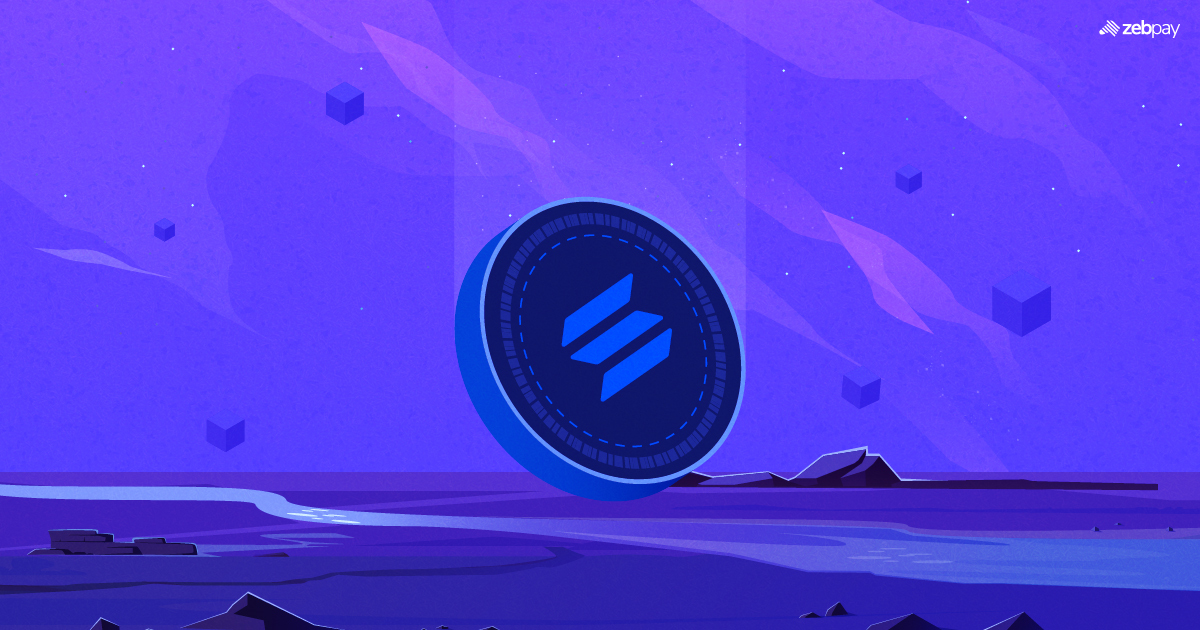15 February 2023 | ZebPay Trade-Desk
Solana’s first block was created on March 16, 2020, and introduced the world to the potential benefits and possibilities of Proof of History or PoH, a novel technique that claims to greatly increase the efficiency and scalability of blockchain networks. Dubbed the “distributed clock,” this technology was first proposed in a November 2017 white paper by Solana founder Anatoly Yakovenko.
Proof of History, or PoH, is a novel technique used in blockchain systems to ensure historical data is accurate and has not been tampered with. This is achieved by using a hash function to create a unique ‘fingerprint’ of a set of data (for example: past transactions). This is then included in a block on the blockchain and can be verified by the nodes currently protecting the blockchain. These nodes can compare the fingerprint with the current state of blockchain data to confirm its validity and accuracy. Because the hash function is deterministic, any change in the data would result in a different fingerprint, which would then be recognized by the nodes as fraudulent and the block would be discarded. PoH is used to secure and decentralise the blockchain, preventing double spending and ensuring that identical copies of the blockchain are maintained and hosted by all nodes.
All decentralised blockchains need a way for the nodes to reach a consensus on the current state of the ledger. How they do this varies widely from chain to chain, but they all use some sort of consensus mechanism. Currently, Proof of Work and Proof of Stake are by far the most common options, while Proof of History is emerging as a solution to increase the efficiency of consensus mechanisms.
The following table gives a quick overview of the main differences between the three consensus mechanisms.
| Proof-of-Work | Proof-of-Stake | Proof-of-History |
| Miners perform computational work to mine new blocks | Validators are chosen based on the amount of crypto assets they “stake” as collateral | Uses a verifiable delay function to establish that a certain amount of time has passed since the last block |
| Miners are rewarded with block rewards and transaction fees | Validators can get annual returns in some percentage depending on the crypto they stake. | The person gets a reward consisting of the fees of the transactions of that block. |
| Energy- Intensive | Less energy intensive | Allows for the creation of historical records on the blockchain state. |
| Extremely secure but inefficient and expensive to maintain | Highly efficient but less secure | Increases scalability by operating on top of consensus mechanisms. |
Proof-of-History (PoH) is a scalability solution that allows you to build and secure lightweight blockchains with a verifiable history.
Read more: Proof of Stake VS Proof of Work
It works by creating a timestamp for each block and then using a verifiable delay function (VDF) to prove that the timestamp was generated in a specific amount of time. It’s a hash of the previous PoH and the current block. A sequence of these timestamps is called a time string and it proves that the blocks were added to the blockchain at a specific point in time.
The timestamp is a hash of the previous PoH and the current block. This creates a series of timestamps that can be used to prove that a block was added to the blockchain at a specific point in time. The timestamp is then transmitted to the network and can be verified and stored by all nodes.
The VDF is a cryptographic function that requires a lot of computation to calculate but can be easily verified. Nodes can easily verify that the timestamps were generated in the right amount of time and not pre-computed before adding the block to the chain. With PoH, Solana can significantly reduce the amount of data that needs to be stored and verified, allowing the network to process more transactions and serve more users.
Pros and Cons of Proof of History (PoH)
Solana’s Proof of History (PoH) technique has several advantages for the network. The main benefit is that it significantly improves the scalability of the blockchain as previous transactions can be efficiently verified while minimizing data storage requirements. It is also extremely energy efficient, reducing the carbon footprint of PoH-enabled blockchains.
The main disadvantage is that it relies on a trusted third party, the PoH generator, to generate the hashes that are included in the blockchain. This PoH generator plays an important role in the security and reliability of the network, and the network in general can be negatively affected if the PoH generator is unreliable.
Possible problems with Proof of History (PoH)
Although proof-of-history can enable incredibly fast and efficient blockchain systems, it has its limitations.
By far the most important of these is centralisation. At the heart of the PoH system are PoH generators, which are used to generate a PoH sequence. Since there is only one PoH generator at a time, these represent a single point of failure and are viewed by some as an unacceptable level of centralisation.
Additionally, generating proof-of-history hashes is computationally intensive, making a node more complex and expensive to operate. According to the official Solana documentation, validation nodes must meet strict hardware requirements, with the following recommended spec being: 12 cores (24 threads) + CPU, 128GB RAM, and 500GB-1TB+ storage.

